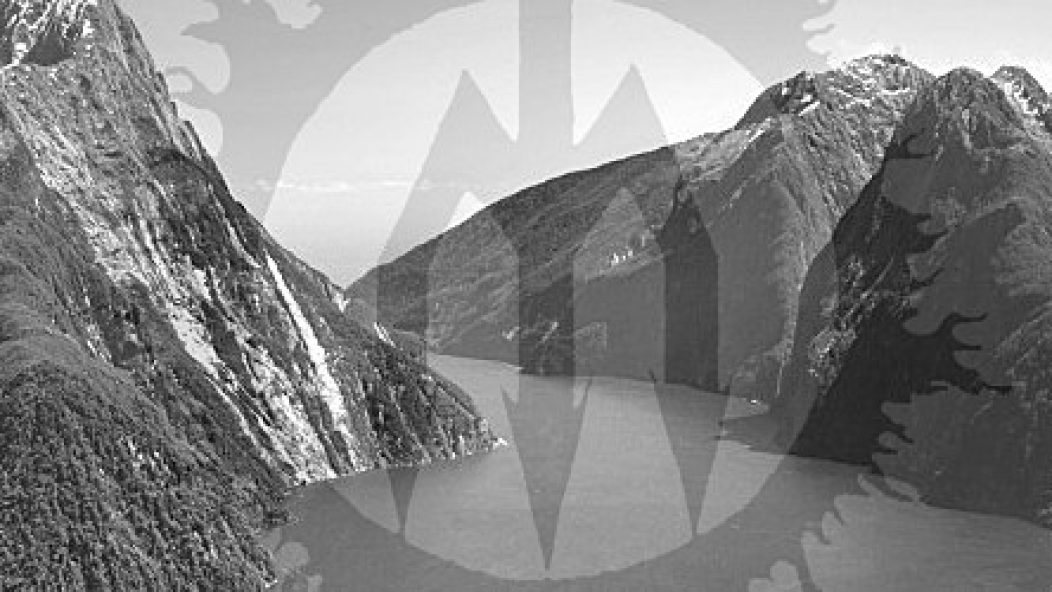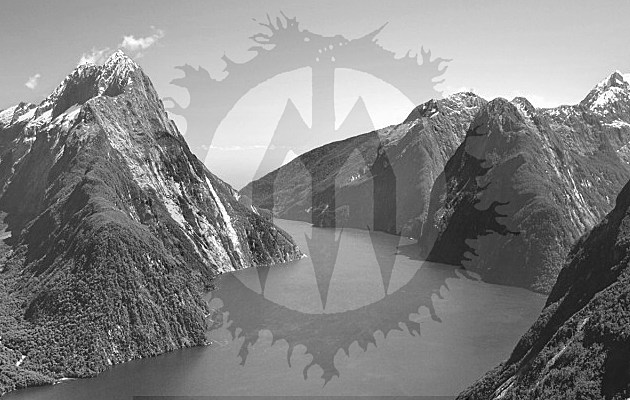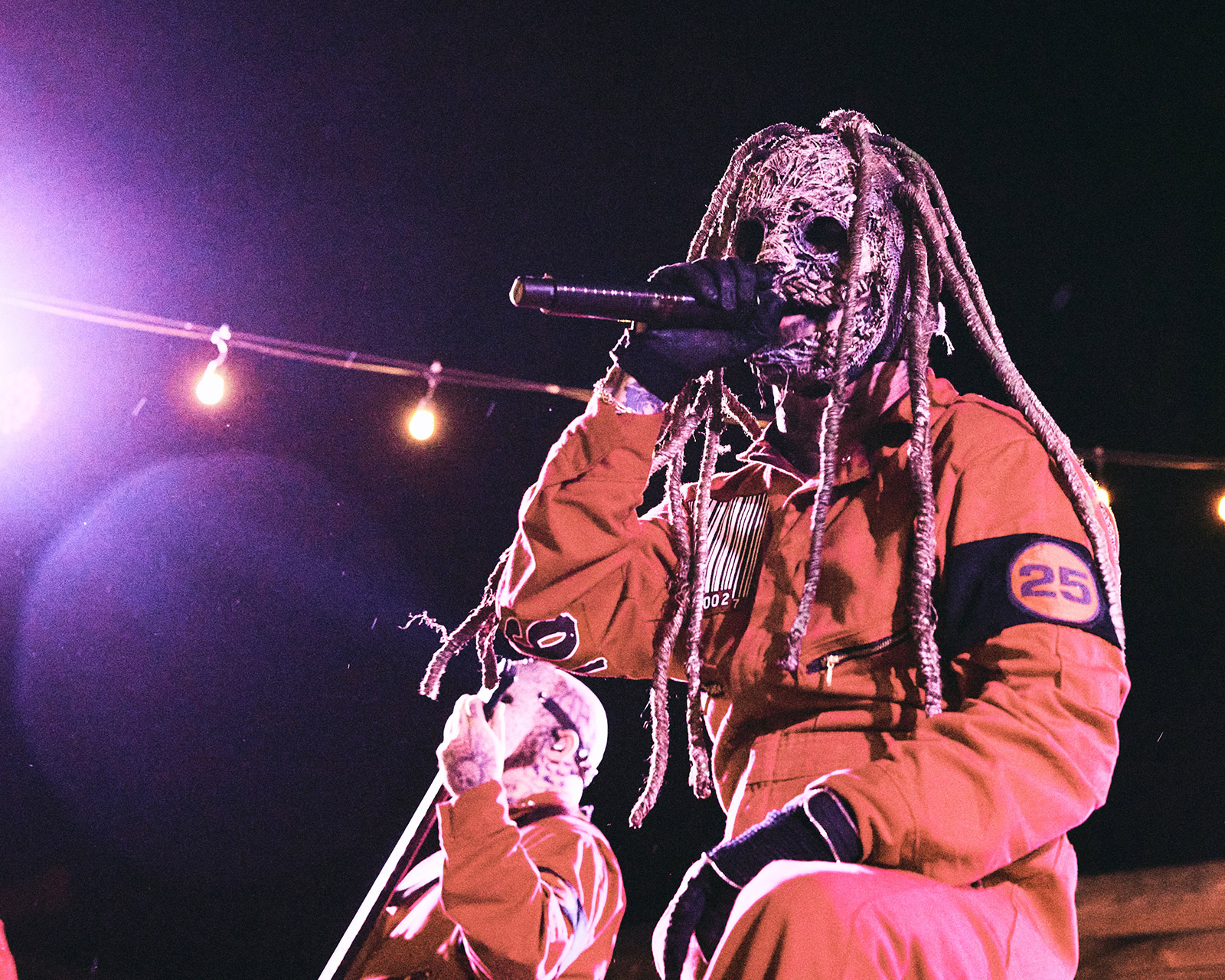
Interview: Craig Hayes (South of Heaven)

…
New Zealand is a great example of metal’s unique ability to take root anywhere. Though it sits in the middle of the Pacific with a population barely exceeding four million, New Zealand has still produced 285 entries worthy of the Encyclopaedia Metallum. And those outfits aren’t just regional specialties. Over the past decade, more and more New Zealanders have set out on globe-spanning tours. You may not know much about the nation that birthed them, but chances are high you’ve filled your ears with Diocletian or Ulcerate if you’re a regular reader of this site.
While New Zealand bands are making waves around the world, they haven’t broken through on their home soil. Craig Hayes wants to fix that. The born and bred New Zealand metalhead just put out a two part documentary on the extreme scene titled South of Heaven: A History of New Zealand Extreme Metal on Radio New Zealand and he’s working on a book detailing the same topic. I had a chance to catch up with Craig and ask him about the documentary, which you can stream below, and whether there’s something definably New Zealand about his country’s heaviest export.
…
…
…
So what drove you to create this documentary?
Well, for some unknown reason, a number of websites and magazines have let me pollute their pages over the years, and I’ve always tried to write about as many interesting New Zealand metal bands as I can. Folks seem to enjoy hearing about our scene, especially nowadays, with some of our bands being well-known internationally, but instead of me blathering on about it once again, I thought it’d be far more interesting to hear directly from some of the founders of New Zealand’s extreme metal scene, and some of those working hard to sustain and support the scene today. Radio is a perfect format to get that done, and the idea for a series was always brewing since I started interviewing extreme metal bands for our public broadcaster here, Radio New Zealand.
My main driver was that the New Zealand media loves to talk about the country’s music success stories, especially if a band gets a sniff of overseas acclaim, but our extreme metal scene is never mentioned in that discussion. Most people in New Zealand wouldn’t have any idea that bands like Vassafor, Ulcerate, Diocletian, Witchrist, or Heresiarch exist, let alone that those bands are highly respected around the world. I just wanted to point out to the listeners of the series, most of whom would have known nothing about our extreme metal scene, that underground metal has been kicking around since the late-’80s in New Zealand, and that it’s found success based, in part, because of its fiercely DIY, non-mainstream attitude. That seemed a fitting way to pay tribute to the New Zealand extreme metal bands that are known overseas, and to those involved in the scene here at home.
In Part One you talk with a lot of the players that built the Christchurch and Auckland scenes. Were there any surprisingly revelations/anecdotes?
I was in my late teens and living in Christchurch when extreme metal first arrived in New Zealand. So, I was aware of what happened in that city, and around the country in general. I can’t say I was surprised by any revelations or anecdotes. Rumors are always whispered about, and I definitely got a few scandalous ones confirmed. I suppose I did discover a few tales I’d not heard before, but nothing I found truly shocking.
Maybe I’m jaded, but I think it’s probably more the case that we all know what goes on when a bunch of hot-blooded youth are kickstarting a metal scene anywhere in the world, and we all know the many reasons why things can run into difficulty. I mean, some fucked-up things happened in the early years of the New Zealand extreme metal scene. Some of it was vindictive, some of it was unfortunate, and some of it was just stupid and hilarious. I don’t think New Zealand is any different to anywhere else in that regard, but I’ll save those tales for the book. I don’t think Radio New Zealand’s audience is quite ready to hear about skulls being dug up, people humping animal guts on stage, or faeces-infused corpse-paint just yet.
…
…
How did New Zealand culture, society, and the geography affect the rise of the metal scene? Is there anything that’s New Zealand-specific that you hear in the music?
I asked everybody I spoke to for the series that very same question, and I got a different answer every single time. Obviously, you can’t take my country’s culture, society or geographic isolation out of the picture completely, because that’s just ingrained in us as New Zealanders. But, some of the musicians I spoke to were adamant there’s nothing specifically New Zealand about the music we make here.
They have a point, because, for many years, the scene here was so small that overseas bands provided the inspiration for a lot of New Zealand’s extreme metal musicians. Also, if you weren’t already familiar with Ulcerate or Diocletian, for example, I think you’d be hard pressed to ever guess where they came from.
That said, I think there are a few things that are specific to New Zealand metal. Certainly, it’s attitude.
Firstly, pre-internet, New Zealand was pretty well off the map for a lot of people. And it’s not like you can just jump in a car and zip across a state line and visit us today. I think a sense of the frustration that comes from our isolation can be heard in the extreme metal we make here, and I think that isolation also plays into the fact that New Zealand’s metal scene is overwhelmingly made up of markedly vicious extreme metal bands too.
I’ve always thought there was a sonic thread runs through a lot of extreme metal bands from New Zealand, and a lot of the musicians I spoke to while making the series referenced the utterly filthy, down-tuned tone (especially the death-rattle bass tone) that first emerged when extreme metal started here. You can definitely hear the influence of that sound rumbling through plenty of bands right to this day.
Culturally, you could probably group New Zealand metal bands under one banner. I mean, it’s definitely not all sunshine and roses down here, and some bands don’t want to be associated with a nationwide scene at all. But there’s an old adage about New Zealand being a nation built on ‘number 8’ fencing wire, meaning we’ve got an inventive culture and we’ll build anything, even if we’re short of a few components. That certainly rings true in the metal community – it’s exactly what the musicians who founded extreme metal in New Zealand did, and that same mentality is prevalent in the scene today. It’s really just a continuation of that DIY spirit that underground metal was originally forged on, and I think that ethos applies for bands that are happy to be grouped together here, and those that choose to sit outside the scene.
Everything about the extreme metal scene here is basically run in-house by fans and bands. There’s pretty much no support from the mainstream media, and zero access to the kinds of arts funding that New Zealand rock and pop acts can get. I can’t speak for how others see it, but to me, that’s punk as fuck.
What’s next for metal in New Zealand? Do you see it going in a particular direction? And do you think bands like Diocletian and Ulcerate will get the love at home that they do abroad?
Well, the whole black/death/doom/war metal nexus is obviously prominent, because of the success and influence of Diocletian, Witchrist, and Heresiarch. Bands like Sabbatic Goat and Trepanation are doing great things in that realm too, and long-running crossover titan Malevolence is always worth checking out.
Black metal’s made a big resurgence here as well. Bands like Skuldom really added huge amounts of fire to the scene a few years back, and Vassafor’s obviously well-respected internationally, but groups like Exordium Mors, Bulletbelt, Blood of the Moon, and Winter Deluge are all fantastically ferocious too. One thing New Zealand has never been short of is death metal bands, and aside from Ulcerate, there are stalwarts like Dawn of Azazel, and dozens of younger bands just waiting to be discovered on Metal Archives.
As for any clear direction, I think New Zealand metal’s probably spreading out into lots of different directions more than following any one specific trend. I mean, there’s great punked-up thrash bands like Numbskull, groups like the legendary Sinistrous Diabolus, and along with sludgier bands like Shallow Grave and Meth Drinker, those are phenomenally powerful groups.
The scene’s certainly very different to how it was back in the ’90s and early-2000s. There are fewer shows with different sub-genres playing together, and some people see that as a sign of the scene fracturing. There are certainly tensions playing out as the metal scene grows here, but they’d be no different to anywhere else. Overall, I think things are really healthy and thriving.
I don’t think bands like Diocletian or Ulcerate are short of fans in New Zealand, at least not from within the extreme metal community, but, in my opinion, there is a divide between your average New Zealand metal fan, and those buying the extreme metal produced here. New Zealanders supposedly buy more metal per head of population than anywhere else in the world, but if that is true, most of what’s being bought is the worst metal imaginable. Bland, chart-friendly metal does sell well here, but you’re not really going to see many of the people buying that stuff at your local extreme metal show. The extreme end of the scene is made up of dedicated underground metalheads, folks who appreciate the necessity of dark art. There’s plenty of well-attended shows, but, you know, this isn’t exactly easy listening music, and the audience for it isn’t massive.
That means bands like Ulcerate or Diocletian probably aren’t going to find a huge audience at home, because they aren’t palatable for a lot of people. That’s no bad thing, and I doubt Ulcerate or Diocletian could give a shit about that. For all the success those bands and others have had, there’s been hardly any mention of that in the media here because underground metal is still, very much, niche music for a niche audience in New Zealand, and that’s why we like it. I mean, it would be great to see more metal bands being recognised for what they’re doing, and that’s definitely one reason why I made a radio series. But, I’ve never met anyone in our extreme metal scene here who cares about media attention or dreams of chart success. Like I said, it’s a DIY, self-sustaining community, and most of the mainstream media attention it has received is from people who know nothing about the scene leaning on the same old cliches. So, you know, fuck ’em.
…
…
Have you had a good response at home for the documentary? How do you feel about the final product?
The reaction has been exactly what you’d expect for a series looking at a music genre that people are really passionate about: applause up front, and a few boos from the back. I’m glad that people appreciated what I was trying to do, and I know the series has been really popular on Radio New Zealand, with loads of folks tuning in, and listening from overseas too. That’s been heartening.
What’s really cool is that a couple of guys I interviewed for the series set up a Facebook page about the history of New Zealand extreme metal, after the first part of the series aired, and 800 people joined in a couple of days. I’m not claiming any credit for their success in doing that, but if the series has sparked some interest in sharing some memories and getting conversations going about how our metal scene has developed to today, then I’m stoked about that.
On the grumpy side, well, some people listening to their radios were absolutely horrified by the music they heard, but you just have to rub your hands together with glee about that. Covering this kind of music obviously brings strong opinions from those in the metal scene too – about missing this or that band. That’s a valid criticism, but I did have a massive script featuring dozens of bands at the start. Problem was, I had 20-plus years of music and happenings to talk about, but only 50 minutes to play with. I definitely didn’t want the series to be me just listing bands, so I had to pick a few key points to talk about.
The end result is vastly different to what I imagined at the beginning, but I feel really happy about the series as a whole. I would have loved to make a lengthier series, and I’m definitely going to build on what I’ve started with these two parts. I think the series works really well as a primer on NZ extreme metal. I think there’s a lot in there that’ll be interesting for people who are familiar with the scene or not, and the full interviews with a bunch of people I spoke to will be going online at some stage; that’s where the meat of the tale is.
Ultimately, I think the series is a good first step in documenting the scene, and that’s something I’m going to continue to do. All the research I gathered is going towards a book on NZ metal, so those bands and figures not in the series will all get their due. I’m just grateful to have had the opportunity to do one small thing to support the New Zealand metal scene. In the end, that’s what the series was always about.
…
You can find more media, including full band interviews, here.
…










